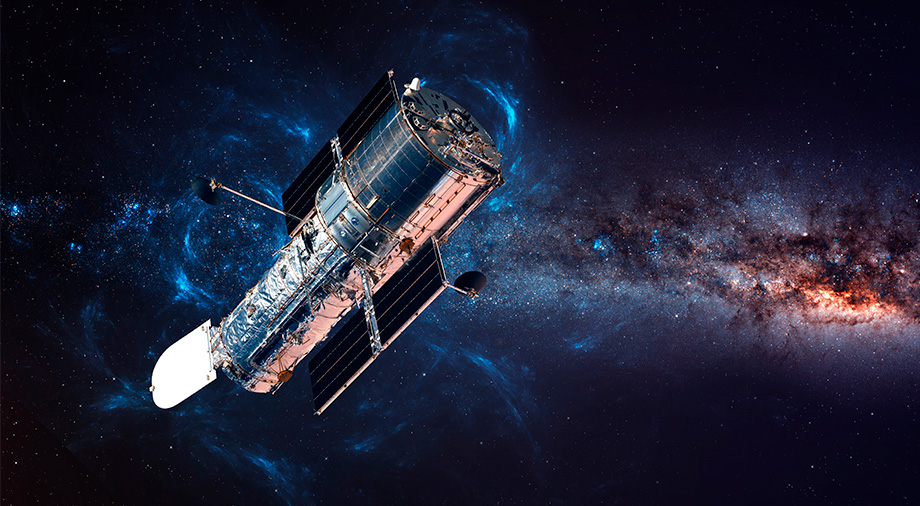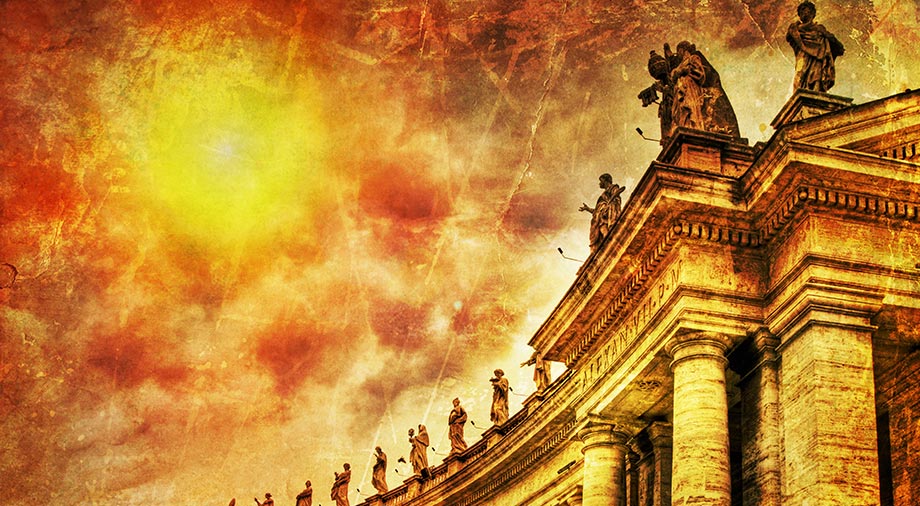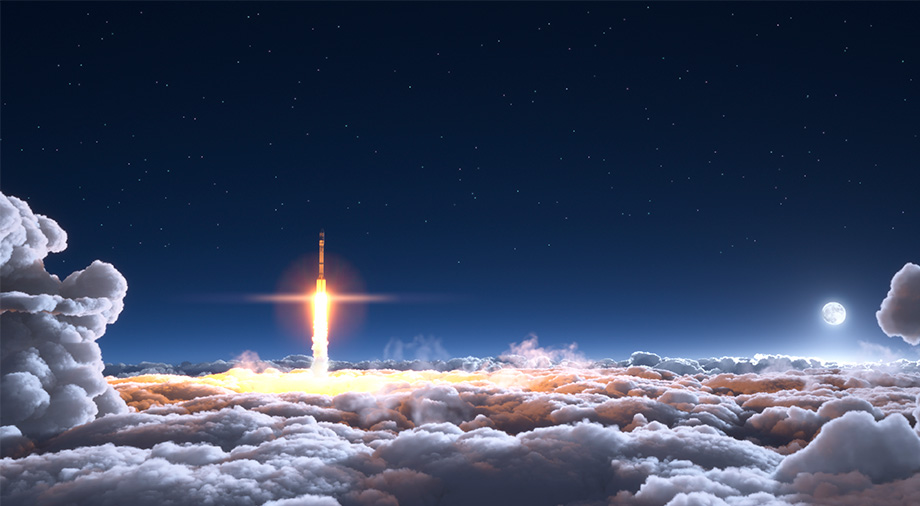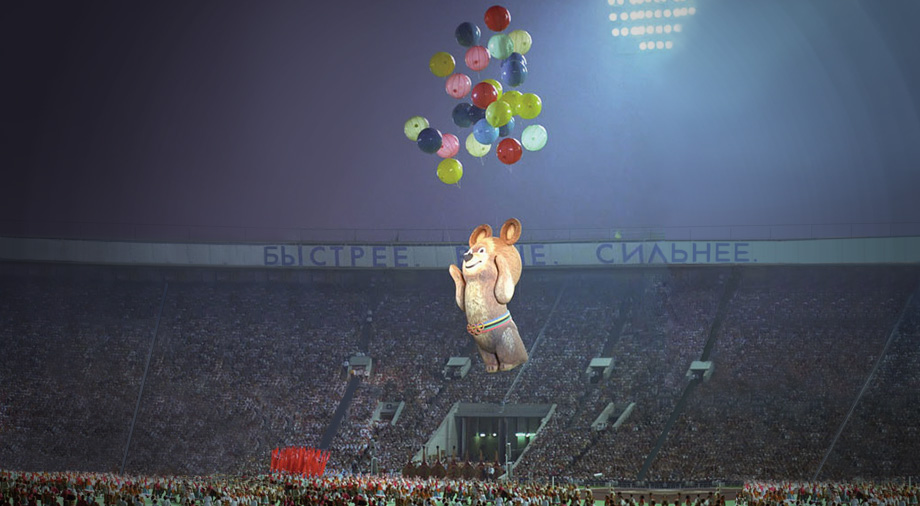For astronomists, the beginning of the 1970s was a time of tremendous anticipation. It was at this time that NASA had begun to develop plans for a large space observatory equipped with a 3-meter-wide mirror. It was supposed to provide scientists with unprecedented opportunities to study the distant corners of our universe. However, things would soon prove to not be so simple. Scientists still had a lot of sweating to do in order to take advantage of this opportunity to start a new chapter in the history of astronomy.
Hubble: great and terrible
NASA’s preliminary plan for the space observatory provided for the creation of two vehicles: a smaller prototype with a 1.5-meter mirror and a main apparatus with a 3-meter one. They were going to launch by the end of the decade. From the very beginning, the project was developed in conjunction with the program to create a new reusable spacecraft. It was planned that with its help the telescope would be periodically delivered to Earth for maintenance and repair, and then returned to orbit again.
However, financial considerations quickly became an obstacle. Even preliminary calculations showed that building a space observatory would cost an astounding amount. Moreover, the massive budget cuts which followed at the end of the lunar race put an end to most NASA programs. This eventually threatened funding for NASA’s large space telescope, when the US Congress decided to withdraw its funding in 1974.
Then astronomers intervened. They launched an intense press campaign, insisting on the importance of building the observatory and explaining the amazing discoveries it could make. These efforts led to a revival of the project, which some time later was officially designated Hubble.
On the other hand, NASA had to make a number of concessions in order to reduce the program’s cost. The aerospace agency abandoned the idea of creating a smaller prototype, while the diameter of the mirror on the big device was reduced to 2.4 m. NASA also had to scrap the idea of periodically returning the observatory to Earth for repairs, opting instead for the craft to be serviced by shuttle crews directly in orbit. They also brought along the European Space Agency to help share costs. The Europeans took over the creation of some of the telescope’s instruments, receiving 15% of its observing time in return.
Hubble was originally supposed to go into space in 1983. However, due to various technical difficulties, this date was repeatedly pushed back. It was then scheduled for launch in September 1986, but due to the Challenger shuttle disaster, NASA’s ships were grounded for several years. As a result, Hubble spent three additional years in its hangar awaiting launch before eventually being sent to space in April 1990.
NASA’s triumph was short-lived. With its first images transmitted back to Earth, it became clear that Hubble’s telescope mirror had a defect. Because of this, his resolution was significantly worse than expected. Much of the planned research program was in jeopardy.
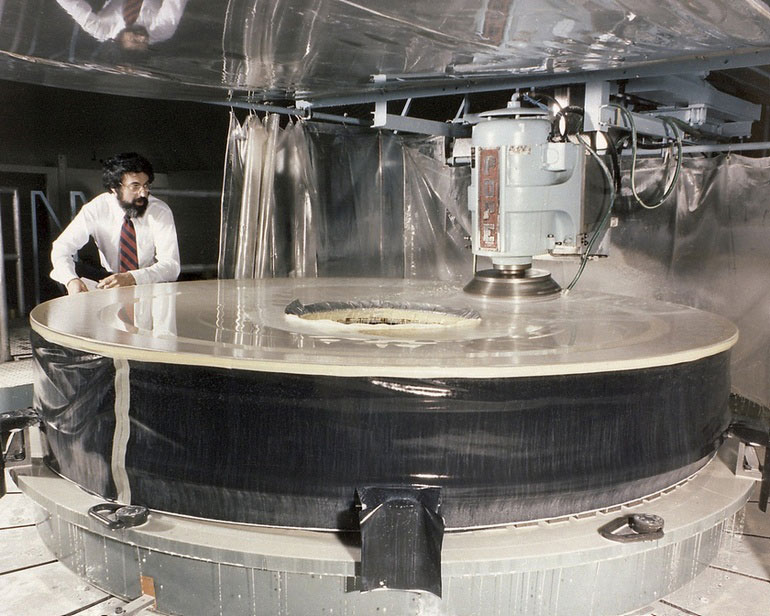
source: itc.ua
Since the Hubble was designed to be serviceable in space, NASA began to look for ways to save it. It was impossible to replace the main mirror in orbit, and returning the telescope to Earth for repairs was considered too costly. It was thus decided to equip it with a block of corrective equipment that would compensate for the mirror defect.
In December 1993, a repair expedition was mounted. Over the course of five spacewalks, astronauts successfully installed the correction unit and replaced some of the telescope’s instruments. As a result, astronomers were finally able to put this revolutionary instrument that they had been dreaming of for so long to use.
Even a dry enumeration of Hubble’s major discoveries would take up many pages, so we ill only focus on the most important milestones. Thanks to the telescope, astronomers were able to calculate the age of the universe and determine that its expansion is accelerating. It took photographs of the aftermath of the collision of comet Shoemaker-Levy with Jupiter. Hubble helped confirm the presence of black holes in the centers of most galaxies, as well as discovered ancient galaxies that existed just a few hundred million years after the Big Bang. It helped us observe seasonal changes on the giant planets of the solar system. Hubble enabled the discovery of a number of extrasolar worlds and helped demonstrate some of the characteristics of their atmospheres. Thanks to the Hubble Telescope, astronomers carried out a radical reassessment of the total number of galaxies in the Universe.
Data from Hubble helped unravel many long-standing scientific mysteries, but at the same time raised many additional questions that required the creation of fundamentally new theories. In fact, the telescope has been the godfather of all modern cosmology. As of 2018, over 15,000 peer-reviewed scientific papers have been written based on data collected by the space observatory. For many years, Hubble has held the undisputed leadership in this indicator, remaining the most productive telescope in the world.
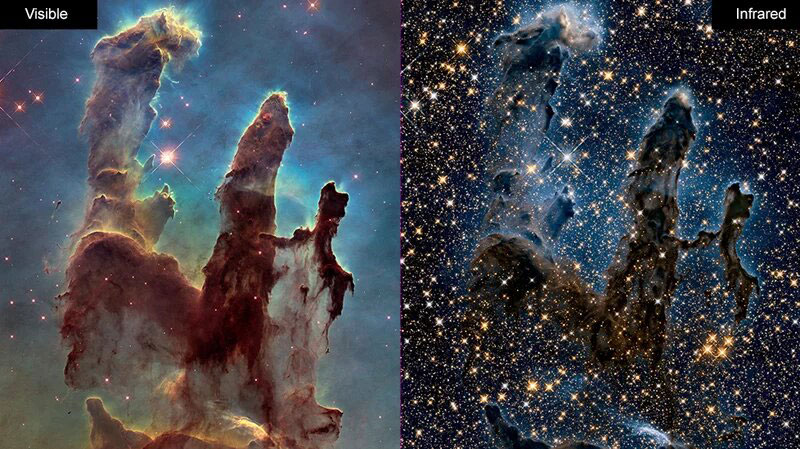
source: media.npr.org
The fact that the observatory was designed to be repaired in-orbit has served it well. In subsequent years, the shuttles flew four more service missions to Hubble. Over the course of many repair missions, Hubble’s scientific equipment has been upgraded many times, markedly improving its functionality over its original version. As a result, despite its very advanced age, the telescope still remains functional and stands at the forefront of scientific research. Now NASA hopes that it will be working until 2026.
Digital Revolution
The launch of Hubble coincided with another event (or rather chain of events) that changed the face of astronomy forever: the digital revolution. New technologies which appeared in the late eighties and early nineties significantly expanded the potential of ground-based observatories, giving them many opportunities that were considered simply unattainable just a decade before.
One of the revolutionary innovations was adaptive optics, which uses lasers to illuminate the layer of atomic sodium in the upper layers of the earth’s atmosphere. As a result, “artificial stars” appear in the sky. Next, a computer compares their images with a view of stars in ideal conditions without distortion, and on this basis determines the parameters of atmospheric turbulence. Then the control system makes changes to the shape of a telescope’s secondary mirror. This makes it possible to compensate for the effect of atmospheric distortions, giving ground-based observatories the opportunity to reach the theoretical limit of image clarity.
Another important innovation was the replacement of film photography in favor of digital photography and the transition to image analysis using specialized software. Previously, when searching for new objects in the solar system, astronomers had to manually compare photographic plates to identify shifted points. This was a rather lengthy and inefficient process. The objects in question often turned out to be too dim, leading astronomers to simply miss them. Computers made it possible to fully automate the search process, which not only radically accelerated the entire endeavor, but also reduced the influence of human error on the interpretation of the results.
Of course, positive changes were not long in coming. In the early 1990s, astronomers began to find more and more icy objects beyond the orbit of Neptune, confirming the previously only theoretical existence of the Kuiper Belt. Some of the newly discovered bodies turned out to be comparable in size to Pluto, which led to the decision in 2006 by the International Astronomical Union to “demote” it from its status as a planet.
Another consequence of the digital revolution has been the widespread use of automated sky surveys, which have made it possible to increase the number of asteroid discoveries by orders of magnitude. If in 1989 astronomers knew about only 10,000 asteroids, then in 2005 this figure increased to 100,000, and in 2020 it exceeded 1 million.
This massive jump in the capabilities of ground-based telescopes could only lead to the construction of a number of new observatories equipped with the latest technology and instruments that are much more powerful than their predecessors. So, in the mid-1990s, on the top of the Hawaiian mountain Mauna Kea, the construction of two 10-meter telescopes of the Keck Observatory was completed. A few years later, it was joined by the 8.2-meter Subaru telescope. At the end of the decade, the Very Large Telescope, located in Chile’s Atacama Desert, a complex consisting of four 8.2-meter main and four 1.8-meter auxiliary telescopes, first opened its cosmic eyes. In 2005, the 11-meter Large South African Telescope was put into operation, followed two years later by the 10.4-meter Great Canary Telescope.

source: wikimedia.org
The digital revolution gave life to a completely new branch of astronomy: the search for exoplanets. If you read the scientific literature written back in the early 1980s, it is easy to see that authors were usually very cautious about the prospects that humanity would ever be able to find worlds around other stars.
And yet, the first exoplanet around a sun-like star was discovered in 1995. And as of the beginning of 2022, the total number of confirmed worlds beyond our solar system has reached almost 5,000. Astronomers have even managed to find an exoplanet near the star closest to the Sun. These achievements would have been practically impossible without high-precision measuring instruments and computers capable of analyzing arrays of observational data and isolating even the smallest deviations in the brightness and speed of stars caused by exoplanets orbiting them.
Following in Hubble’s footsteps
But while ground-based observatories have made impressive strides in recent decades, some things are still beyond their capabilities, namely observations in the parts of the electromagnetic spectrum blocked by the earth’s atmosphere. The only way for astronomers to study them is still the use of instruments in space.
Fortunately, the success of the Hubble telescope has clearly demonstrated the capabilities of space observatories. In the past decades, a whole fleet of specialized devices designed to conduct observations in various ranges of the electromagnetic spectrum went into space. The Chandra telescope, launched in 1999, occupies approximately the same role in X-ray astronomy as Hubble does in astronomy within the visible light spectrum. It studies supernova remnants, black holes, and dark matter. Recently, it even managed to find traces of an exoplanet located in another galaxy. At the same time, despite its advanced age and lack of maintenance missions, Chandra remains in service and continues to make discoveries.
However, for all its achievements, Chandra is far from the only X-ray telescope in the world. Also among its ranks are the XMM-Newton (launched in 1999), NuSTAR (2012), Spektr-RG (2019), and IXPE (2021). In the field of infrared astronomy, the Spitzer (2003), Herschel (2009) and WISE (2009) space telescopes have also been noted for their greatest achievements. In the gamma segment, it is worth highlighting the devices INTEGRAL (2002), Swift (2004) and Fermi (2008).
In 2009, NASA began a new chapter in the history of space astronomy with the launch of Kepler, the first spacecraft specifically designed to search for exoplanets. During its nine years of service, Kepler discovered over 2,600 worlds around other stars. Several thousand more are still being investigated. Kepler has already finished its tour of duty, but it has been replaced by new hunters for extrasolar worlds: the TESS and CHEOPS devices.
Another important area of space astronomy has been the Sun. In 1995, NASA and ESA launched the SOHO observatory, designed to study our star. To astronomers’ surprise, SOHO also turned out to be an extremely effective hunter for near-solar comets – small icy bodies approaching the Sun at extremely short distances. Over its quarter century of work, the observatory has discovered over 4,000 comets. And since SOHO is still observing, there are far more to come.
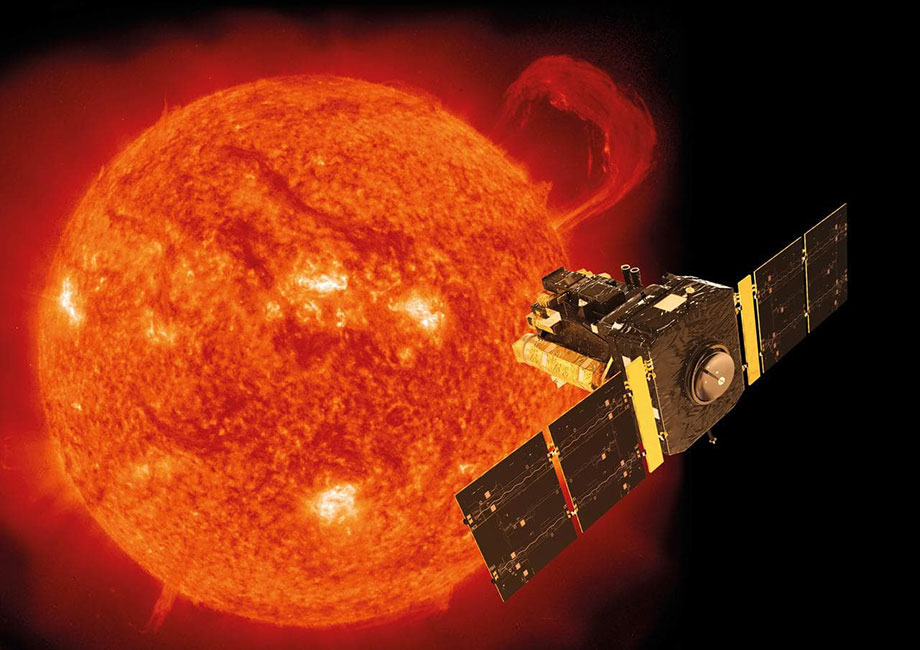
source: universemagazine.com
Other important solar missions include SDO (2010) and STEREO (2006). SDO constantly takes images of the sun’s surface in 12 wave bands. STEREO used two identical devices that simultaneously observed the Sun from different orbital positions, making it possible to obtain three-dimensional renderings of structures and phenomena on the sun using stereoscopic imaging. One STEREO’s probes ceased to function in 2014, but the other is still working.
Looking at all the space telescopes launched over the past decades, it is easy to see that despite all the diversity, the list mostly consists of highly specialized devices of the so-called low and medium price range. The number of true flagship missions of Hubble’s caliber, powerful enough to make milestone discoveries, can still be counted on one hand. This is not due to the lack of desire among scientists to develop new telescopes, but rather to the significant high cost and complexity of such projects, which significantly slows down the process of their approval and financing. But at the very end of 2021, this situation finally began to change for the better.

